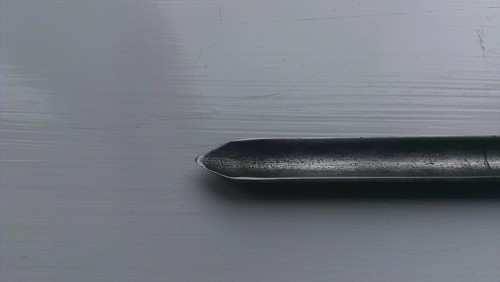undergroundhunter
Established Member
Hi guys n gals,
I picked this up yesterday from a car boot as I just bought an old Stanley ratchet brace and am now on the hunt for bits. Now I have seen shell bits before but never one with a point on the end, I suspect that its to aid in starting the hole in the correct plane but I thought it was unusual. There are no maker marks on the bit not even a size number. It was all rusted up so a bath in some cillit bang and water over night was in order. Also I'm not sure on how to sharpen it, there does seem to be a bevel on one edge but what should I be using to sharpen this type of bit. Any help would be appreciated. Thanks in advance.
Matt



I picked this up yesterday from a car boot as I just bought an old Stanley ratchet brace and am now on the hunt for bits. Now I have seen shell bits before but never one with a point on the end, I suspect that its to aid in starting the hole in the correct plane but I thought it was unusual. There are no maker marks on the bit not even a size number. It was all rusted up so a bath in some cillit bang and water over night was in order. Also I'm not sure on how to sharpen it, there does seem to be a bevel on one edge but what should I be using to sharpen this type of bit. Any help would be appreciated. Thanks in advance.
Matt





































